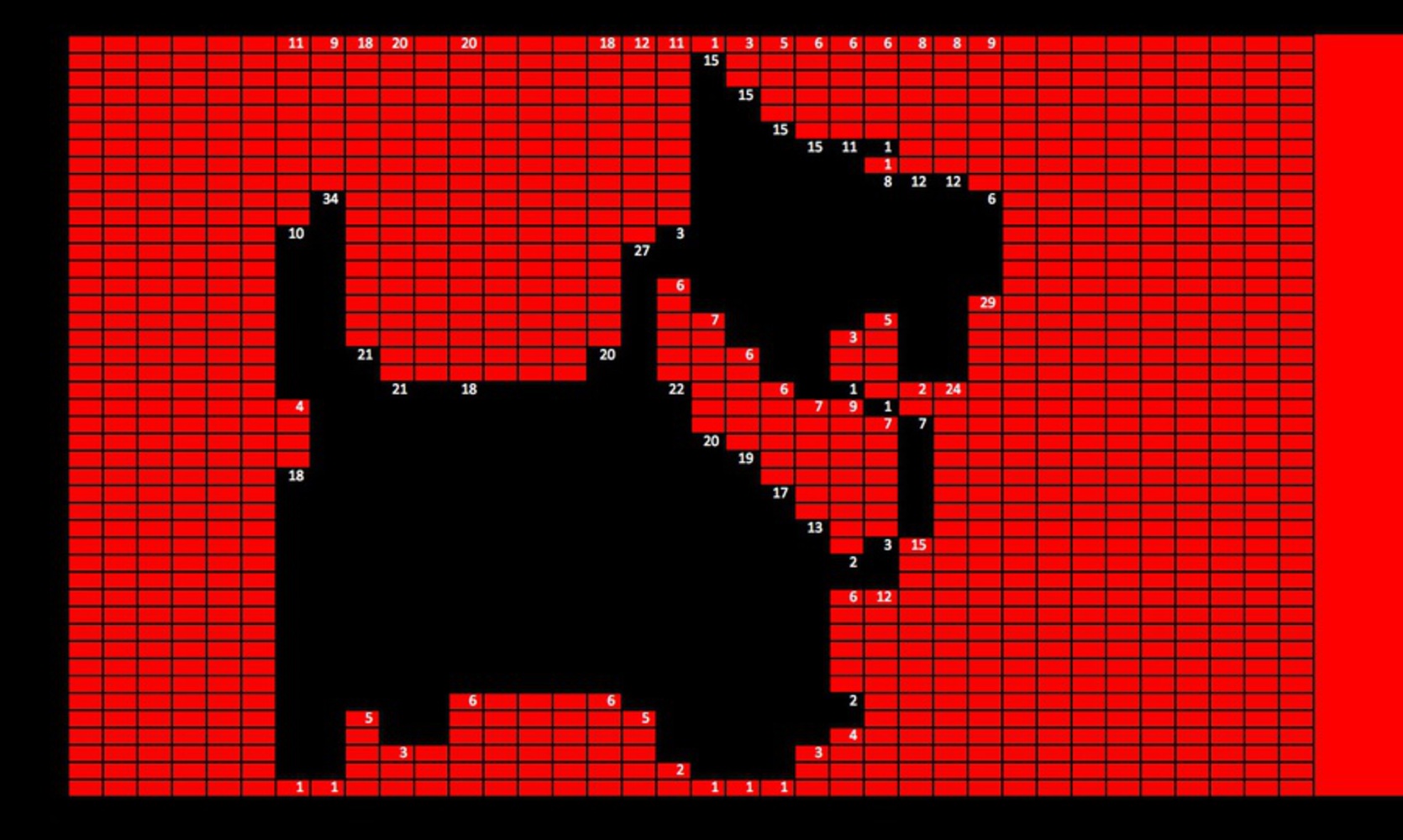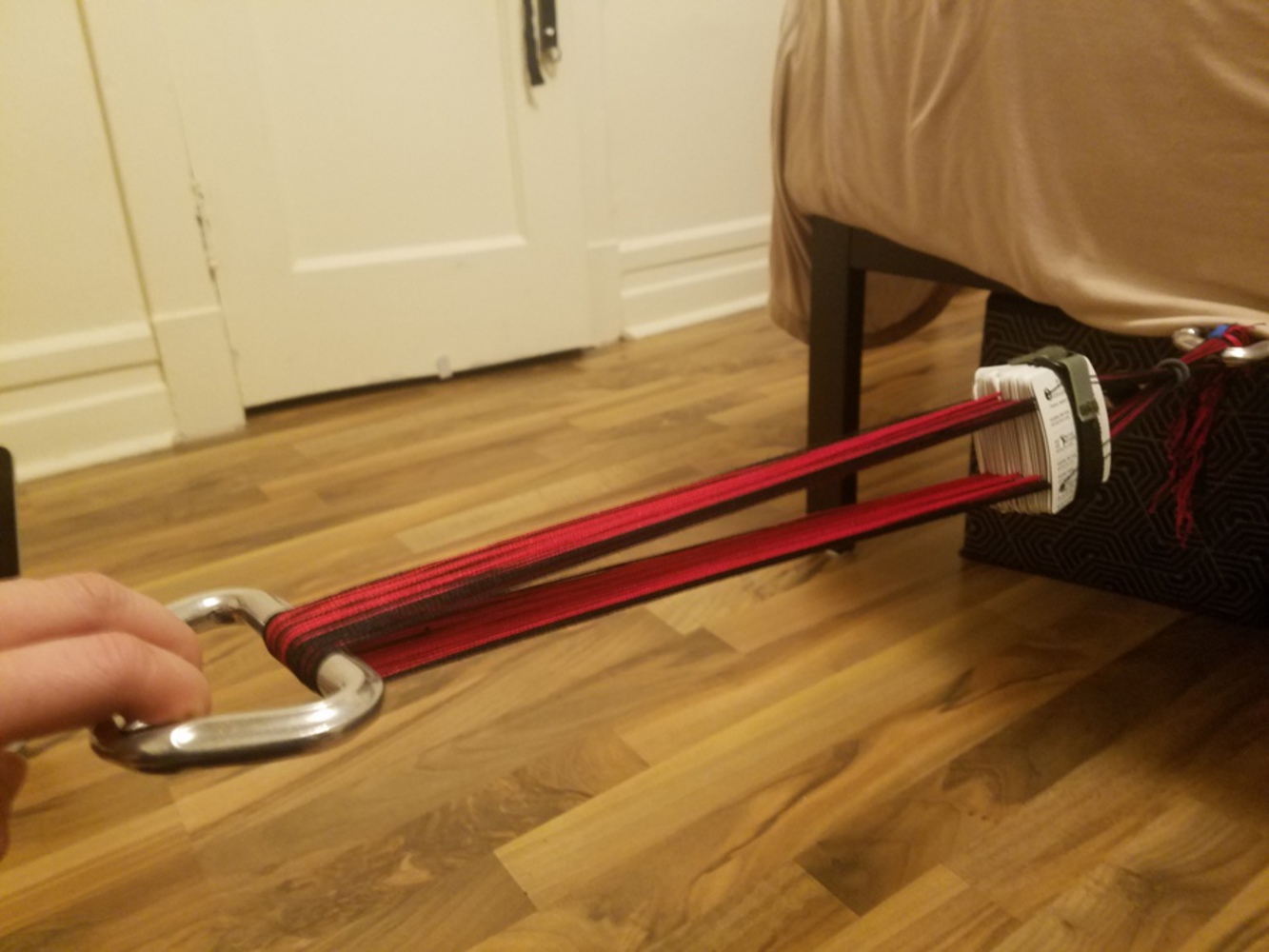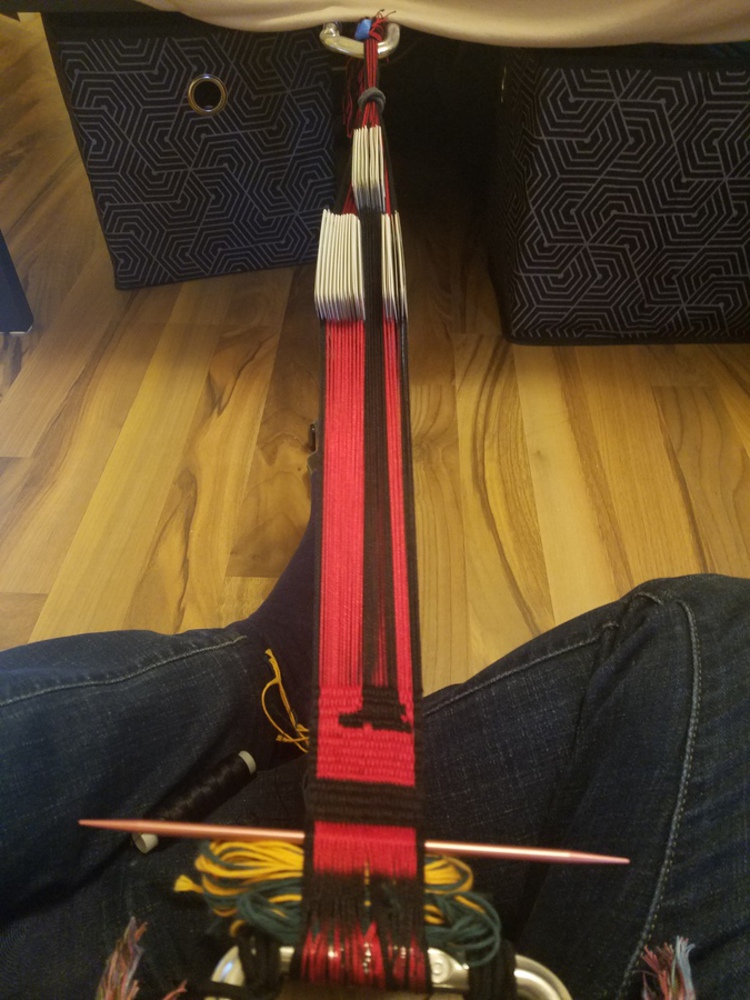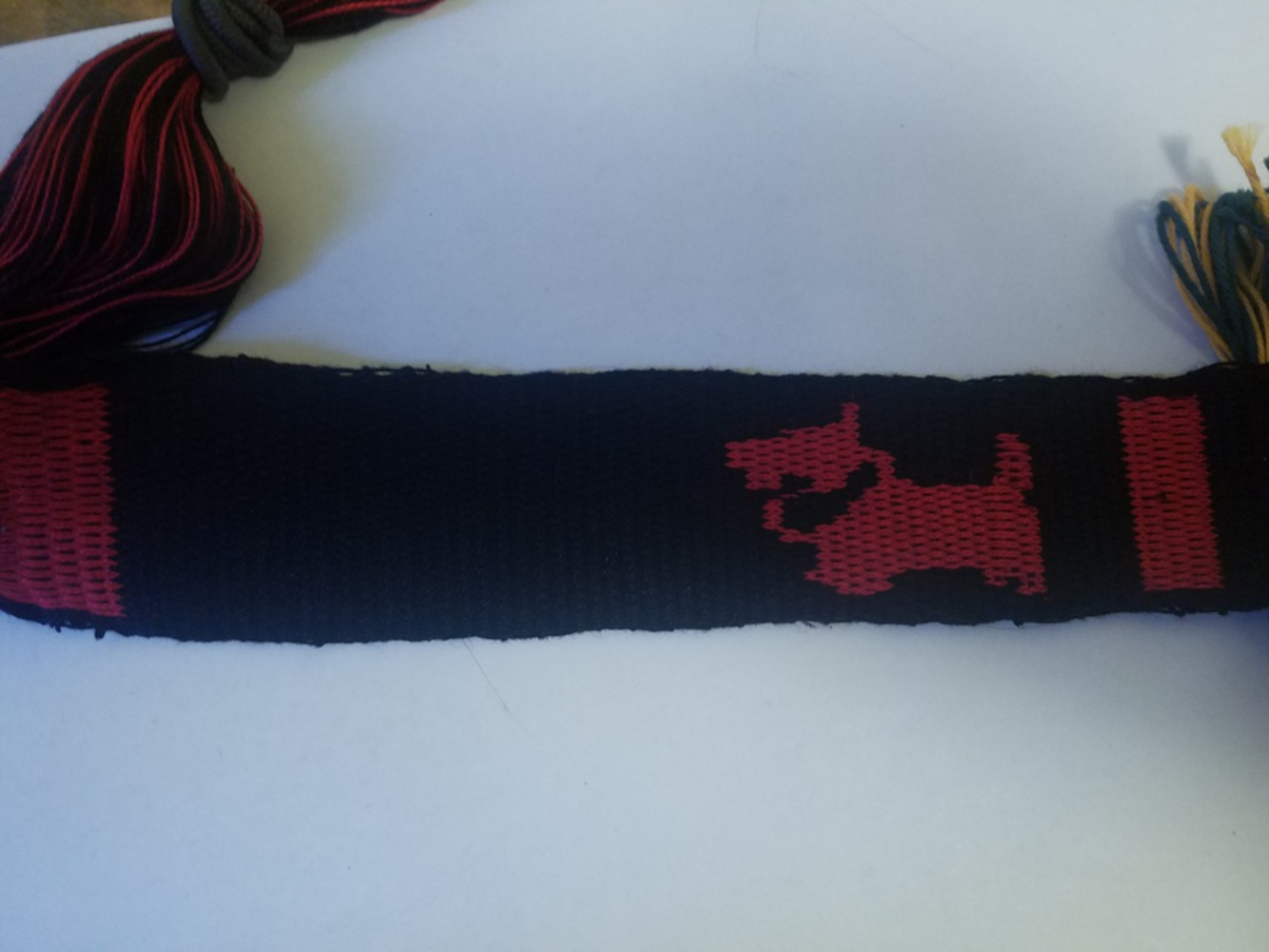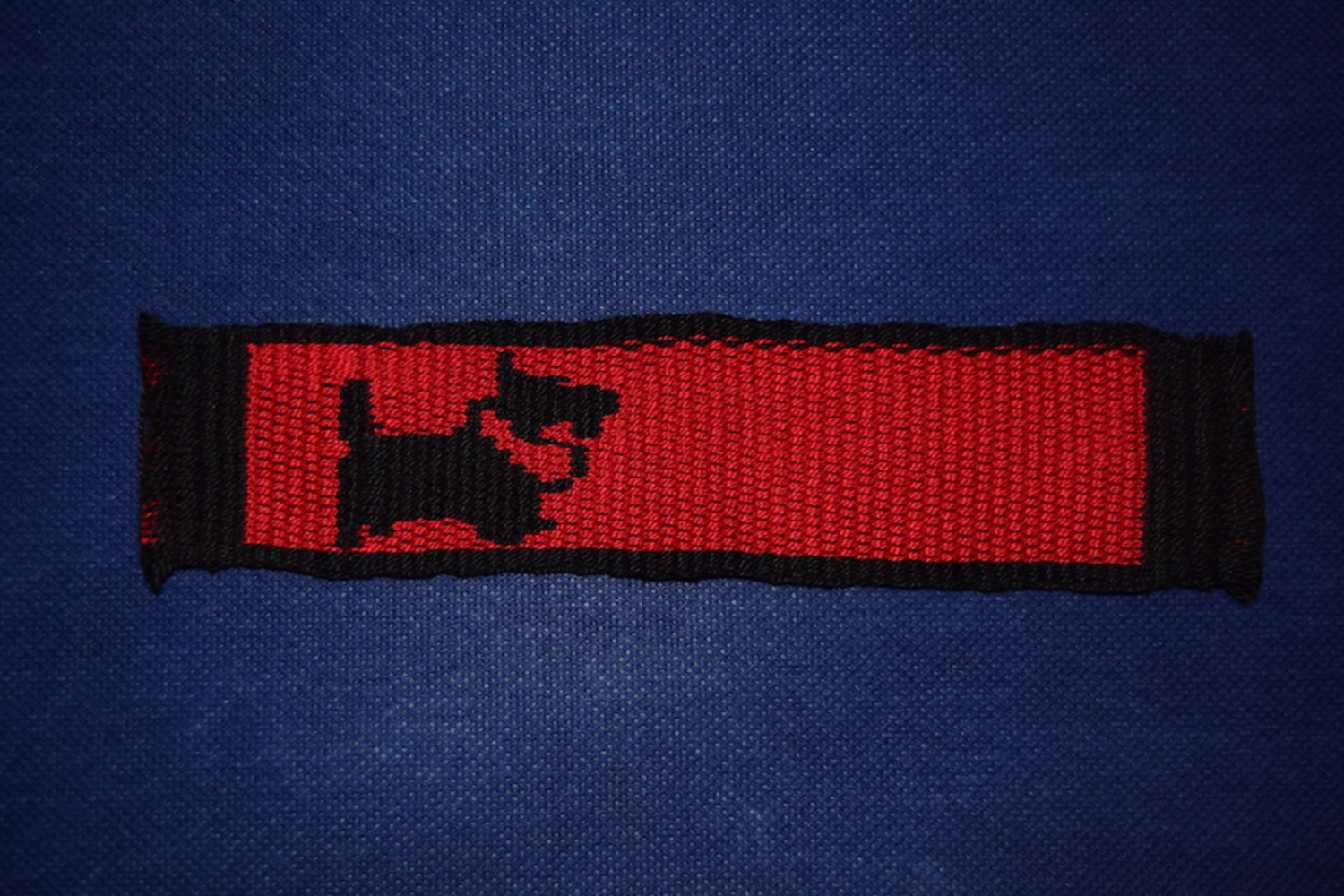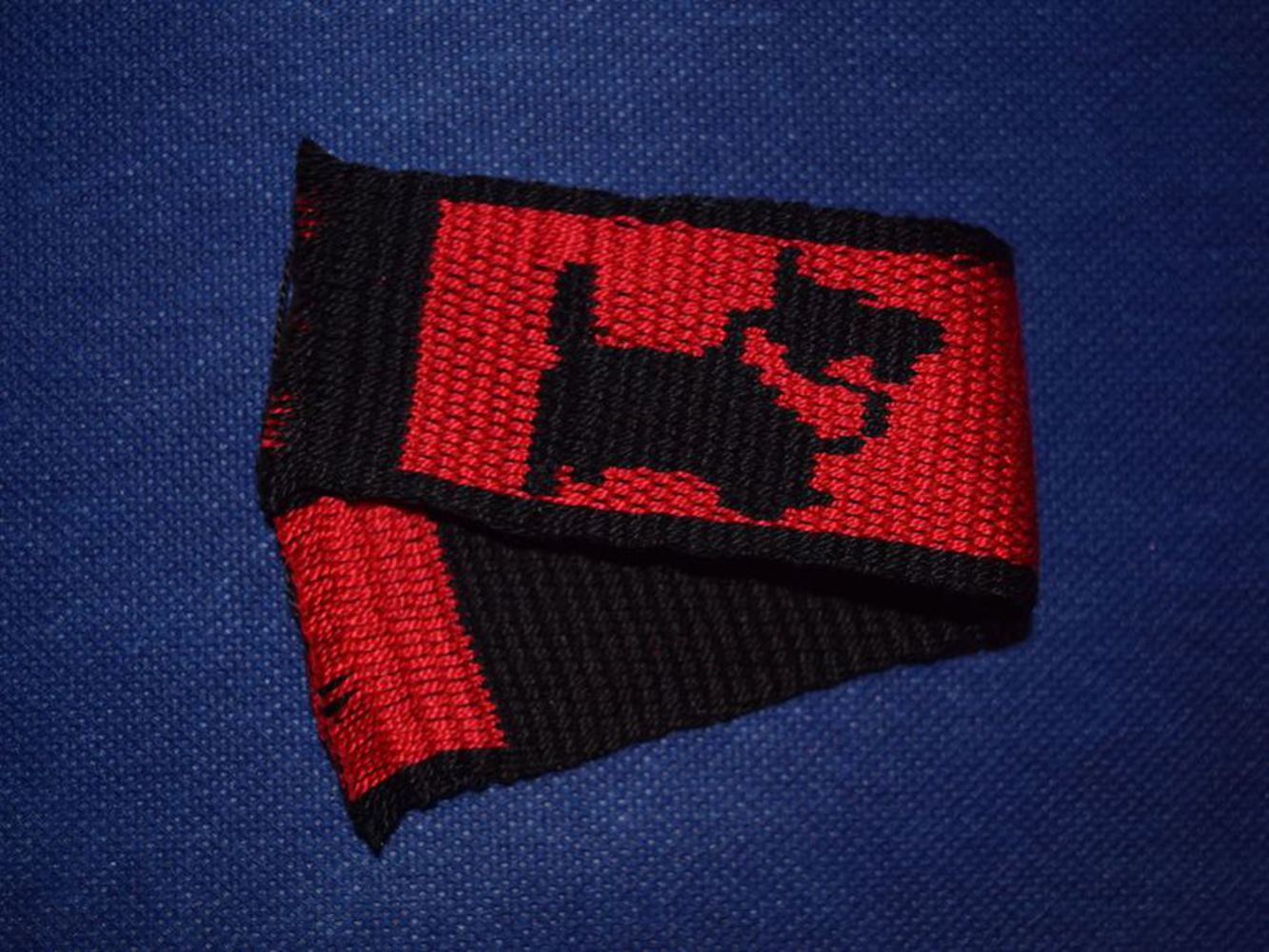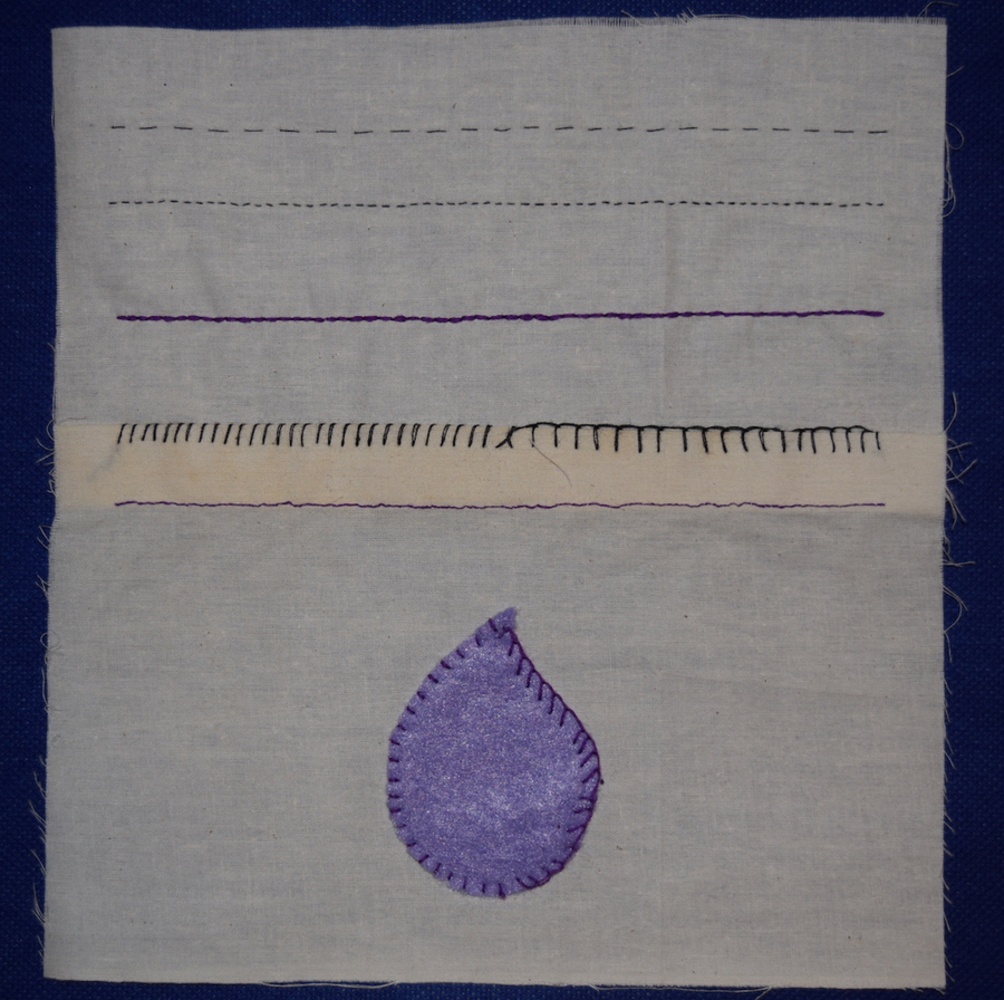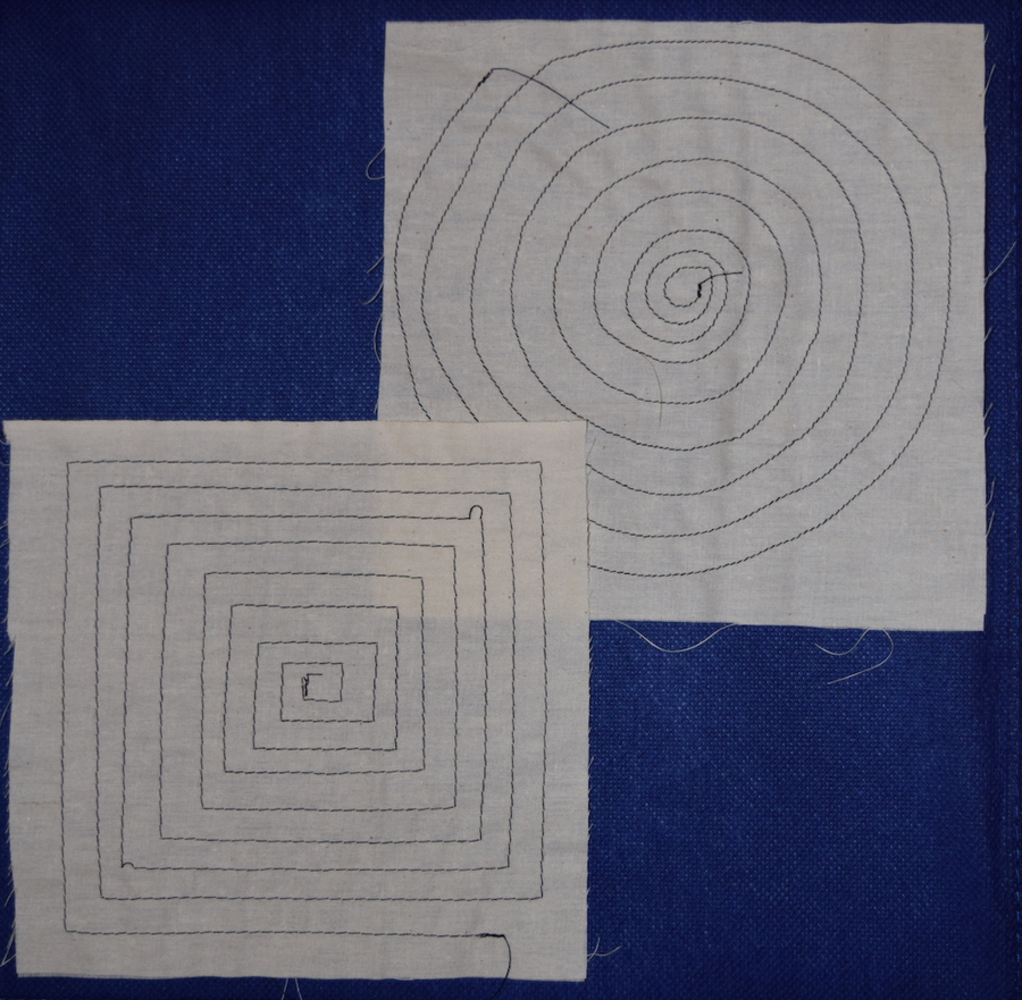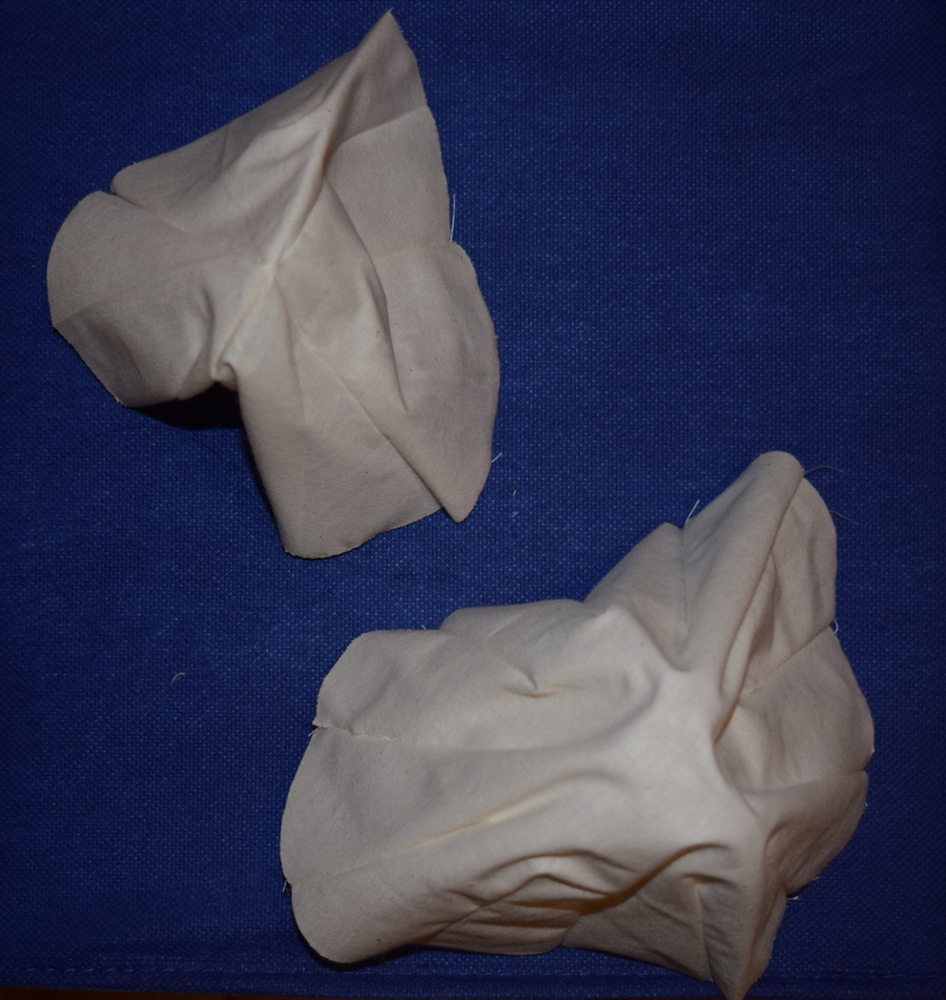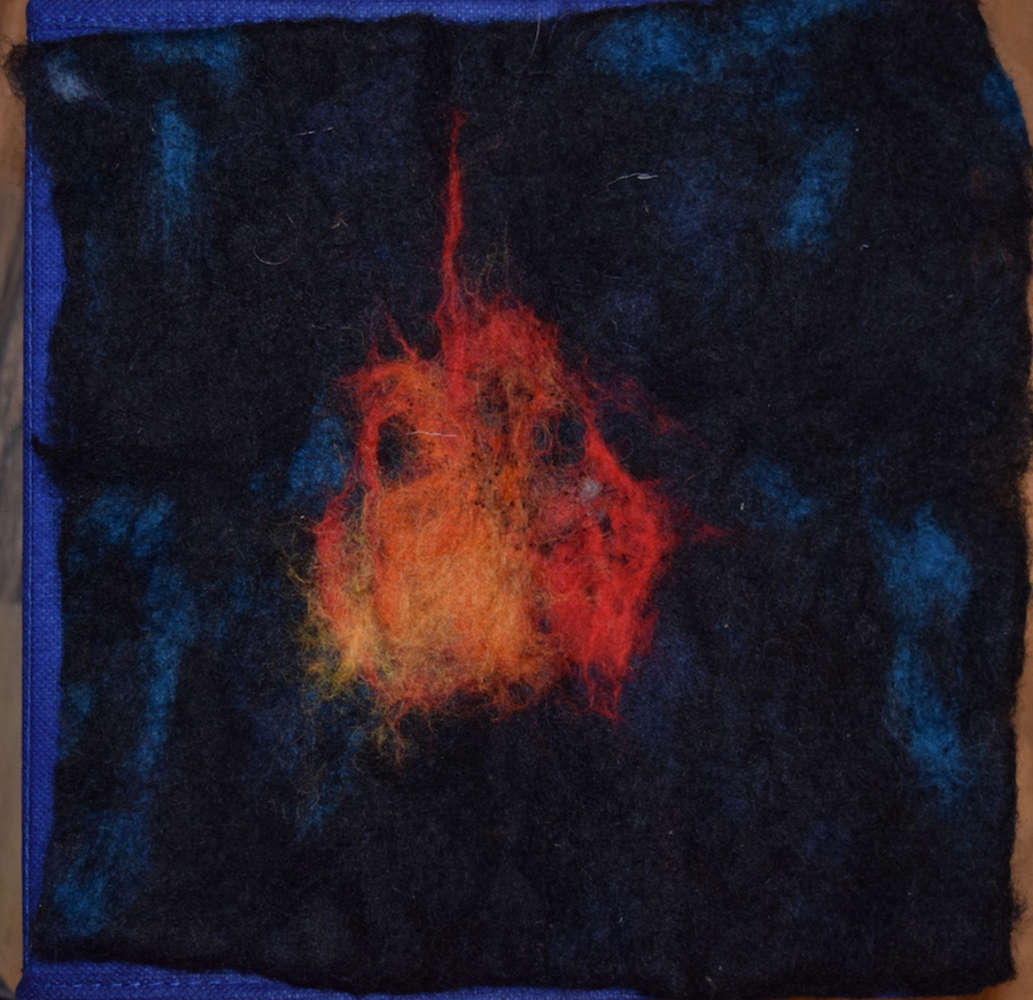Introduction to (Double-Faced) Tabletweaving
I have some experience with tabletweaving, which is a warp-faced weaving technique that allows the weaver to create long, narrow bands of fabric. I wanted to explore double-faced tabletweaving, since you can theoretically create any (most) two-color patterns in the band.
In tabletweaving, cards with punched holes are used to structure the loom. The cards are arranged in a deck, and the warp is threaded through the holes in each card. A combination of the way the cards are threaded (which colors are placed in which cards/holes) and the way the cards are turned creates regular patterns. As the cards are turned, different warp threads are brought to the top of the fabric, and passing the weft between them locks the warp into place.
Double-faced tabletweaving uses just two colors, but through a series of twice forward/twice backward turns, any pattern of those two colors can be created.
